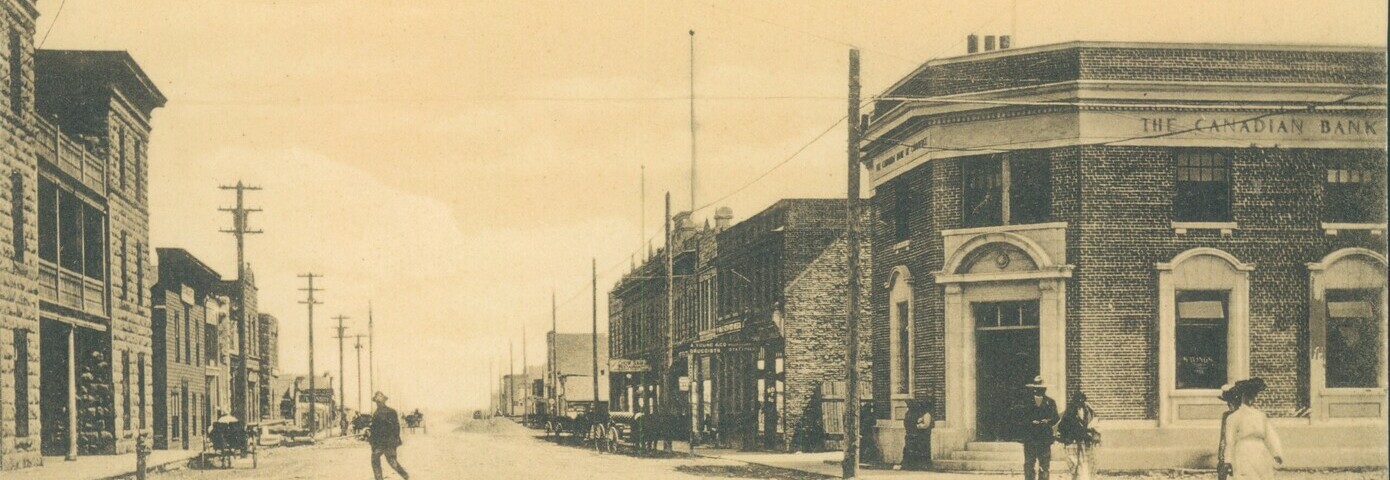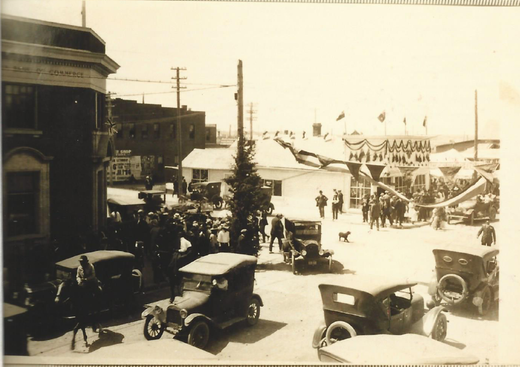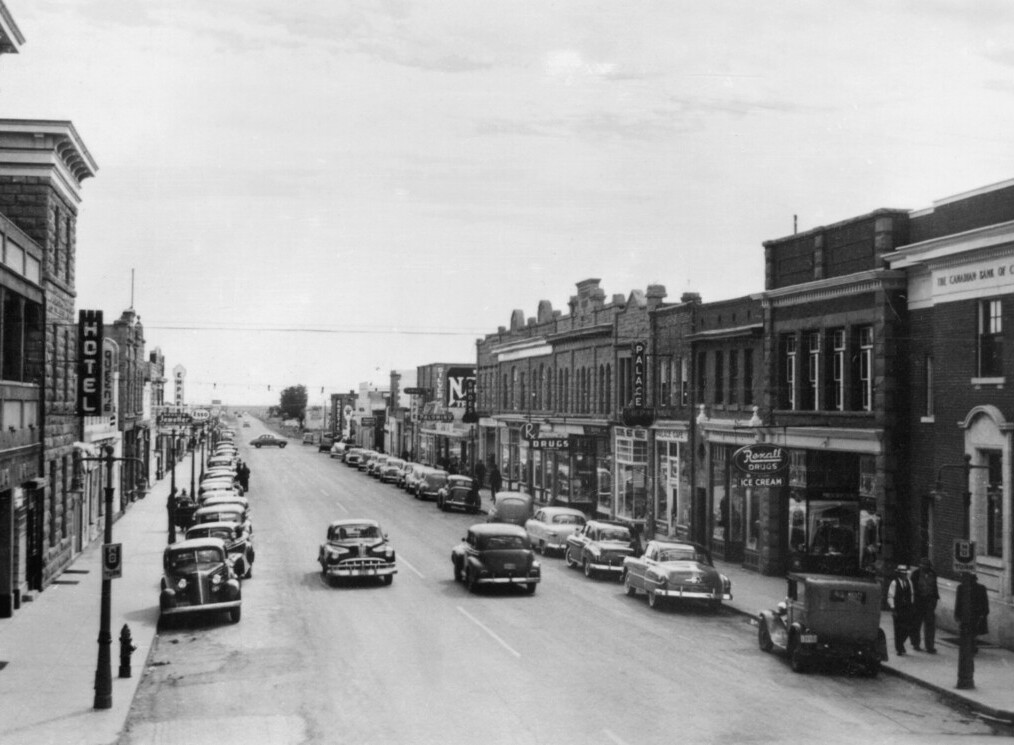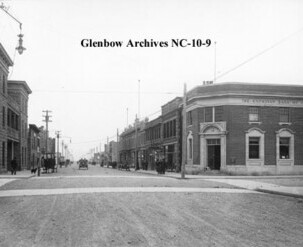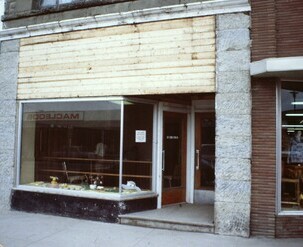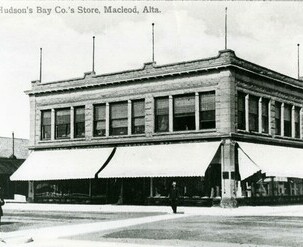Provincial Historic Area
Fort Macleod was founded in 1874 with the arrival of the North West Mounted Police. A community of settlers and businesses that serviced the cattle industry formed outside of the fort. By 1892 when the Calgary and Edmonton Railway reached the community, the town was large enough to become incorporated.
Development of the town center continued until 1906 when a fire on Main Street destroyed most of the wood frame structures. Town Council then passed a bylaw requiring future buildings to be constructed of brick or stone, which was sourced locally. Optimism for growth continued, and by 1911 the Fort Macleod Board of Trade was promoting the town as the hub of southern Alberta.
In the 1980’s and 1990’s, Fort Macleod participated in the Heritage Canada Main Street Program (now a program of the National Trust for Canada) and later the Alberta Main Street Program, initiatives that helped reverse the long term effects of depopulation and service decline experienced by many smaller communities throughout the province. Restoration of the historic Edwardian Classical Revival buildings was funded by a series of federal and provincial grants along with significant investment by the building and business owners. In 1984, Main Street Fort Macleod became the first Designated Historic Area in Alberta and one of only two protected areas in the province.
The Fort Macleod Provincial Historic Area encompasses approximately 6 blocks of Fort Macleod’s commercial core and is listed on the Alberta Register of Historic Places. Of the downtown buildings that contribute to the area, five were built prior to the 1906 fire, all having been faced with brick or locally quarried sandstone. The Territorial Court House, now the town hall (1902 – 04) was designated by the province in 1979 and became a National Historic site in 1980). Four other historic buildings, including the iconic Empress Theatre (built 1912, provincially designated in 1982) round out the mix of government, commercial, financial, hospitality and entertainment uses needed to service the townsfolk and the broader rural community.
The town promotes walking tours of the area that explain the past uses of the historic buildings. Visit the On This Spot site for a “then & now” view of numerous historic locations along main street. Many films and television shows have been shot using Fort Macleod’s main street as the backdrop, including the HBO series ‘The Last of Us’.
To view a map showing the PHA boundary, click here.
The heritage value of the Fort Macleod Provincial Historic Area lies in its representation of pre-World War I development as a community that rapidly expanded from the first permanent North West Mounted Police post established in the Northwest Territories into an important and vibrant service centre for an expanding regional ranching industry. The historic area is also significant for the Edwardian Classical Revival style that characterizes the town's historic commercial and public service area.
Fort Macleod, founded in 1874 with the arrival of the North West Mounted Police, began as an island fort on the Old Man River. Persistent spring flooding resulted in the 1884 relocation of the North West Mounted Police barracks to a site on the south bank of the river west of the island. The community of businesses and settlers that had formed outside the fort followed the police, and the new site proved suitable for development as a service centre for the police force and the expanding cattle industry in the southern foothills. By 1892 when the Calgary and Edmonton Railway reached the community, Fort Macleod had become large enough to be incorporated as the Town of Macleod.
Development of the town's centre continued until 1906 when a fire on Main Street destroyed most of the wood frame structures. Town Council then passed a bylaw requiring future buildings to be constructed of brick or stone, thus ensuring that the look of the entire commercial core would exude the permanence and solidity of the brick and sandstone structures predating the fire. Most of the materials used in the construction of the buildings lining the area's two main thoroughfares were constructed by skilled craftsmen using materials produced by local brickyards, lumber mills and stone quarries. Although the fire was a setback to the owners of the buildings lost, the optimism of civic leaders for the town's increasing regional prominence continued unabated, and by 1911, the Fort Macleod Board of Trade was promoting the town as the hub of southern Alberta.
The Edwardian Classical Revival style depicted in the historic area's commercial core, which had been developing since the turn of the century, came to an end in 1914 with the start of World War I, and by 1920, Fort Macleod had lost its place as the primary service centre for southern Alberta. Because town officials had borrowed extensively to provide Fort Macleod's citizens with services fitting a regional and growing service centre during the years of expansion, the accumulated debt forced the town to accept a low interest loan in 1924. This loan carried with it a caveat that the town could not borrow money for improvements or expansion for 50 years. Combined with the depressions of the 1920s and 1930s and World War II, this commitment effectively stopped new construction and development in the town. The Fort Macleod Provincial Historic Area therefore reveals the commercial core of a southern Alberta town with visions of permanence and prosperity at the turn of the twentieth century.
Character-defining elements that contribute to the heritage value of the Fort Macleod Provincial Historic Area include:
- typical grid layout and street plan of prairie towns;
- Edwardian Classical Revival style of intact streetscape;
- consistent scale of building height, being either two or three storeys;
- masonry construction featuring extensive use of locally quarried rough-faced sandstone;
- general design of commercial buildings, including cornices, sign bands, dense and full facades with no setbacks from sidewalk, recessed entrances, and clerestory windows.

